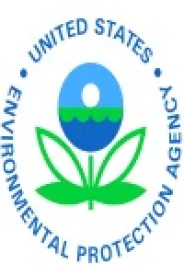Co-Authored by David "Max" Williamson.
On November 8, 2010, the U.S. EPA finalized rules expanding EPA’s Mandatory Greenhouse Gas Reporting Rule applicable to the petroleum and natural gas industry.1 The greenhouse gas reporting rule, which was originally promulgated on October 30, 2009, was applicable to approximately 10,000 facilities in 31 source categories (such as iron and steel, glass, cement, engines, and pulp and paper), but coverage of certain sectors was deferred for further study.2 See Andrews Kurth Client Alert, November 16, 2009. The reporting rules lay the groundwork for various proposed and forthcoming emissions control regulations of greenhouse gases, including common industrial emissions of carbon dioxide (CO2), methane (CH4), and nitrous oxide (N2O). See Andrews Kurth Client Alert, September 25, 2009. EPA has asserted that greenhouse gases from the oil and gas sector are greater than emissions from 40 million automobiles and has targeted the sector for reductions.
Petroleum and Natural Gas
The new reporting rule finalizes a proposal published in March 2010,3 and requires petroleum and natural gas facilities with 25,000 metric tons or greater of carbon dioxide equivalent4 emissions per year to report (1) annual CH4 and CO2 emissions from equipment leaks and venting; (2) emissions of CO2, CH4, and N2O from gas flaring; (3) combustion emissions of CO2, CH4, and N2O from stationary and portable equipment at onshore petroleum and natural gas production facilities; and (4) combustion emissions of CO2, CH4, and N2O from stationary natural gas distribution equipment.
The new rule thus expands the types of businesses in the oil and gas sector subject to reporting beyond those covered by EPA’s original mandatory reporting rule. Reporting obligations will now apply to approximately 2,800 facilities in the following categories:5
- onshore petroleum and natural gas production
- offshore petroleum and natural gas production
- onshore natural gas processing
- natural gas transmission and natural gas distribution facilities (i.e., pipelines and distribution)
- underground natural gas storage
- LNG storage and LNG import and export facilities
Petroleum and natural gas industry participants with significant vented, fugitive and combustion emissions of CO2, methane and nitrous oxide are now required to report emissions for each year beginning January 1, 2011, with facility-level reports submitted annually by March 31 of the following year, and using a special definition of “facility.” As noted, the rule requires reporting for facilities emitting 25,000 metric tons of CO2 equivalent per year (approximately 1,000 tons of methane). Notably, the focus of the proposed rule has shifted from direct measurement of emissions to modeled and/or estimated reporting, and is estimated to cost an average of $16,000 per facility in the first year of reporting and $7,000 per facility thereafter.
As EPA is requiring greenhouse gas reporting, the energy sector is exploring opportunities to reduce greenhouse gas emissions voluntarily. For example, the American Carbon Registry earlier this year approved the first U.S. carbon offset methodology for a fugitive methane emission reduction project in the oil and gas sector, which will enable energy companies to generate carbon offset credits by retrofitting pneumatic controllers on natural gas pipelines to reduce fugitive emissions of methane.
Click here to view the press release in PDF format.
* * *
These new rules are part of an overall trend at EPA to use the authority provided in the Clean Air Act to regulate greenhouse gases. Although the rules have not yet been published in the Federal Register, a pre-publication version and additional information are available on EPA’s website.
Click here to subscribe to future Andrews Kurth alerts.
______________________
1. Mandatory Reporting of Greenhouse Gases: Petroleum and Natural Gas Systems; Final Rule, 75 Fed. Reg. 74458 (Nov. 20, 2010) (to be codified at 40 C.F.R. Part 98, Subpart W).
2. Mandatory Reporting of Greenhouse Gases; Final Rule, 74 Fed. Reg. 56260 (Oct. 30, 2009) (codified at 40 C.F.R. Part 98).
3. Mandatory Reporting of Greenhouse Gases: Petroleum and Natural Gas Systems; Proposed Rule, 75 Fed. Reg. 18608 (Mar. 22, 2010).
4. Methane is 21 times more potent on a CO2 equivalent basis than carbon dioxide, and nitrous oxide is 310 times CO2e.
5. Various categories within the oil and gas industry are already covered by earlier versions of the Part 98 Mandatory Reporting Rule, including petroleum refineries (Subpart Y) and natural gas and NGL suppliers (Subpart NN).




 />i
/>i

